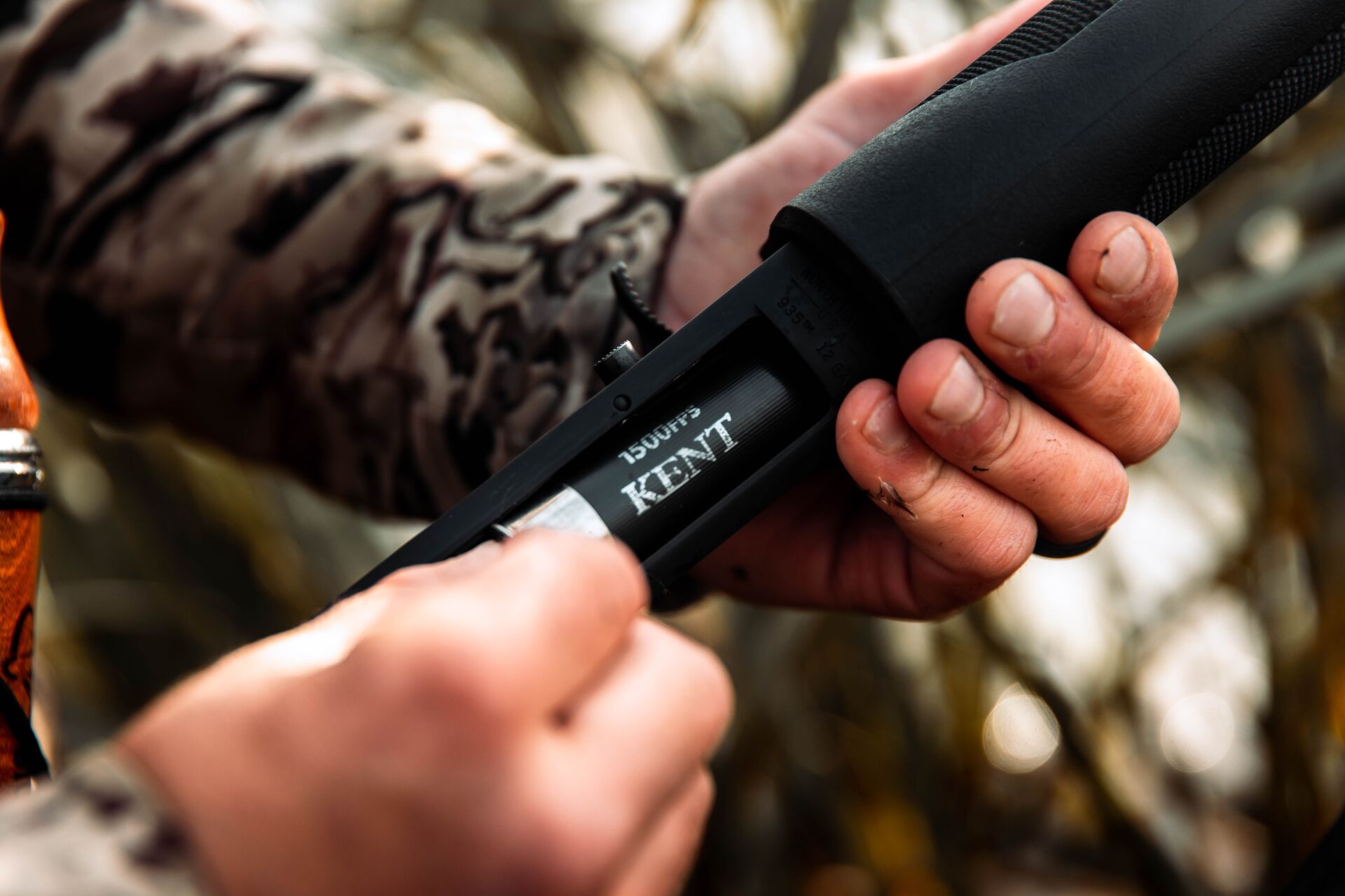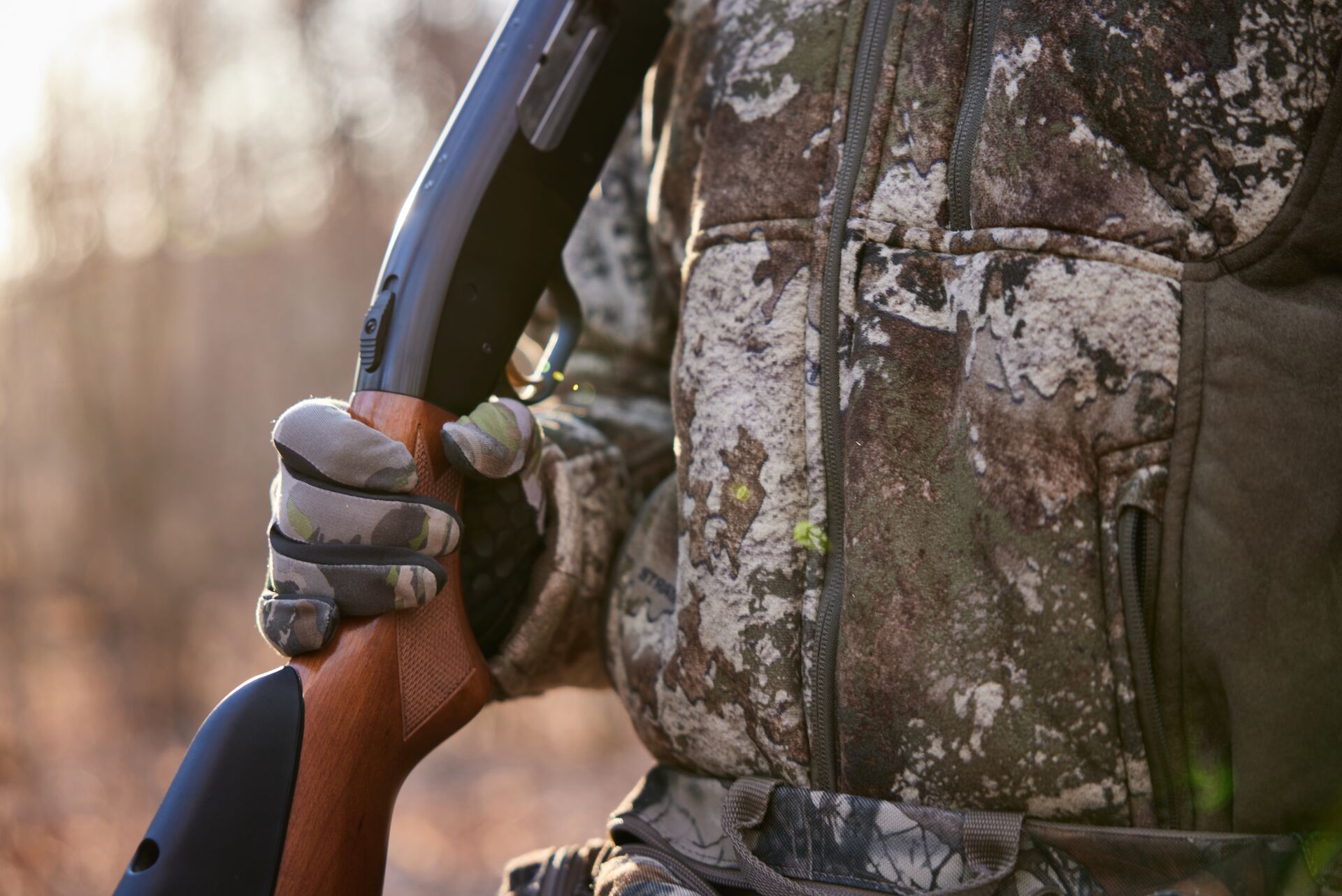Shotgun Know-How: The Parts of a Shotgun

When hunting, the shotgun should be an extension of your body for the best potential of being an accurate shooter. Understanding your shotgun and how it works can help make lifting and shooting at your intended target a more seamless action.
Whether pursuing small game, upland birds, waterfowl, or whitetails, having in-depth knowledge of your shotgun is vital to your success and safety. Let's explore the essential parts of your shotgun, from stock to muzzle, so that you can become a more knowledgeable, skilled, and safe hunter.

The Stock
The shotgun's stock supports all other components and provides a stable shooting platform for holding and aiming the gun.
Traditionally, shotgun stocks were made of hardwoods like walnut and maple. Today, many stocks are made of heat-insulating synthetic materials.
Butt
The butt is the rear portion of the stock that is held against your shoulder when firing. It usually has a rigid plate or cushioned pad to help minimize recoil.
Comb
The comb is the top edge of the stock on which you rest your cheekbone when firing. Combs come in several shapes, heights, and angles to achieve the best fit and sight line.
Grip
The grip is held by your trigger hand and allows you to keep the shotgun steady while providing easy access to the trigger. Shotgun grip styles range from the traditional straight to the more ergonomically designed pistol and vertical grips.
Fore-End
The fore-end is attached to the forward part of the action and barrel. It provides a place for your non-dominant hand to hold the shotgun.

The Barrel
The shotgun barrel is the long metal tube through which the shot or slug travels.
Most shotgun barrels are smoothbore, which minimizes friction as the shot travels through the barrel.
However, rifled barrels have internal grooves that spin slugs to improve accuracy. Birdshot and buckshot should not be fired through a rifled barrel.
Barrel Length
Most hunting shotguns have barrel lengths between 26 and 28 inches.
Longer barrels have a smoother swing and more momentum for tracking fast-moving targets like waterfowl. Shorter barrels are lighter and easier to maneuver in dense cover found in most upland hunts.
Chamber
The chamber is at the rear end of the barrel, where the cartridge is inserted and locked in place before being fired. Chamber size refers to the cartridge's dimensions (diameter and length) that will fit inside the chamber.
Muzzle
The muzzle is the front end of the barrel where projectiles exit. As the last point of contact for the projectiles and gasses, some hunters modify the muzzle to improve performance.
- Chokes control pellet spread as they leave the barrel by constricting their spread, extending their range and density. Most modern shotguns have interchangeable chokes threaded into the end of the barrel, while older shotguns may have fixed chokes machined into the barrel's end.
- Muzzle brakes are added to improve accuracy by reducing recoil and muzzle jump. The brake extends the length of the muzzle and has holes or slots that redirect gasses to counteract the shotgun's rearward recoil.
- Suppressors (where legal) reduce noise and recoil. Currently, 42 states allow hunting with suppressors.
To determine the best accessories or modifications for your shotgun, practice with different parts until you find the ideal configuration for your needs.

The Action
The action is the heart of the shotgun. It is where cartridges are loaded, fired, and ejected.
Action Types
There are four primary types of shotgun actions. They include:
- Break-action shotguns, in single or double barrels, use a hinged barrel that swings open so cartridges can be loaded or ejected.
- Pump-action shotguns use a manually operated sliding fore-end to cycle the action.
- Semi-automatic shotguns utilize energy from fired shells to cycle the action.
- Bolt-action shotguns, while less common for hunting, require the shooter to manually lift, pull, and push the bolt to load and eject rounds.
As with accessories, the type of shotgun you prefer will come with practice and understanding the best shotgun for the game you hunt.
Action Components
The main component of the action is the bolt.
When firing the cartridge, the bolt blocks the barrel chamber's rear opening, forcing the expanding gas forward through the barrel. The bolt also contains the firing pin and the extractor, which grabs the cartridge's rim after firing to eject the spent cartridge.
The Trigger Assembly
The trigger assembly connects you to the gun when firing a cartridge.
The assembly components include a flat or curved lever pressed to the rear by your index finger to release the hammer, which drives the firing pin into the cartridge primer to ignite the cartridge.
Trigger pull weight describes the force to press the trigger to engage the hammer. On most shotguns, the trigger pull weight is between 1.5 and 5 pounds, with the ideal weight for hunters being around 3-½ pounds. Some shotguns will allow you to adjust the pull weight.
The trigger guard is a D-shaped metal or plastic loop covering the trigger to minimize accidental pulls.
The safety blocks the trigger or hammer from being engaged. A cross-bolt safety uses a push button mechanism attached to the trigger guard. A slide safety, commonly found on breech-action shotguns, is located on top of the grip.
The Sights
Shotgun sights help line your eye with the muzzle for more accurate shooting. The most common types of sights are bead, rifle, ghost ring, red dot, and scope.

The Magazine
The shotgun's magazine holds additional cartridges that are loaded into the chamber by the cycling of the bolt.
Tubular magazines, standard in pump-action and most semi-automatic shotguns, store cartridges in a tube mounted underneath the barrel.
Box magazines hold cartridges in a spring-loaded box inserted into the base of the action.
Most pump-action and semi-automatic shotguns can hold between three and five cartridges. However, state hunting regulations restrict a shotgun to having no more than three shells. Manufacturers typically install plugs in hunting shotguns to meet this requirement.
Safety Considerations When Hunting with a Shotgun
Safety must be a top priority when handling a shotgun at home or on the hunt. We cover firearm safety in-depth in our ilearntohunt courses, but here's a brief overview of safety essentials.
Always treat your shotgun as if it's loaded – even when it's not – and handle it with the same caution you would a loaded weapon. Also, keep the muzzle pointed in a safe direction, away from yourself and others.
Keep the safety engaged when not shooting, but don't rely on it as your only safety measure. Leave your finger off the trigger until you are on target.
Inspect your shotgun before each hunting trip. Check that all parts function and that the barrel is clear of obstructions. Keep your shotgun cleaned and maintained to ensure it's in safe working condition.

Learn More About Safety and the Parts of a Shotgun With Hunter Education
Understanding your shotgun's components and how they work is just the beginning of becoming a skilled, responsible, and ethical hunter. Online interactive safety courses like those offered by us here at ilearntohunt provide outstanding, state-specific educational programs that cover not just firearm safety but firearms and ammunition, hunting techniques, wildlife identification, first aid, and more.
Plus, most states require a hunting education course and certification before hunters can get a license. Our online, gamified courses make it easier to retain crucial information and meet state requirements for hunter education in most states.
So, as you get to know your shotgun and prepare for your next hunt, choose the course for your state for hunting safety training that can keep you and others safe in the field.




